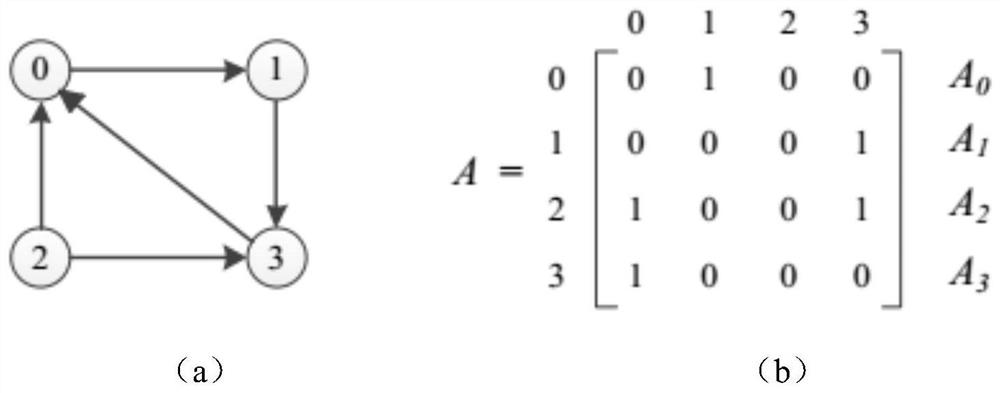Big data processing capacity testing method based on vertex reordering and priority caching
A technology for big data processing and capability testing, applied in special data processing applications, other database retrieval, other database indexes, etc., and can solve problems such as limited performance improvement, non-adjacent logic, and long memory access paths.
- Summary
- Abstract
- Description
- Claims
- Application Information
AI Technical Summary
Problems solved by technology
Method used
Image
Examples
Embodiment Construction
[0100] Such as Figure 5 Shown, the present invention comprises the following steps:
[0101] The first step, graph generation. Use the Kronecker graph generator to generate a random graph structure G=(V,E), V is a set of vertices, which contains N V vertices, N V is a positive integer; E is a set of edges; E contains N E side, N E is a positive integer; N V and N E All are positive integers.
[0102] The second step is to construct an adjacency matrix A that stores the graph G. A ij = 0 means there is no edge between vertex i and vertex j, A ij =1 means that there is an edge between vertex i and vertex j, both i and j are positive integers and 0≤i≤N V -1, 0≤j≤N V -1;
[0103] The third step is to sort the vertices of V based on the degree of vertices and cache the key vertices first. The specific method is as follows:
[0104] 3.1. Traverse each vertex in V, record the degree of each vertex, and get the vertex degree set D, the i-th element in D deg(v i ) repres...
PUM
 Login to View More
Login to View More Abstract
Description
Claims
Application Information
 Login to View More
Login to View More - R&D
- Intellectual Property
- Life Sciences
- Materials
- Tech Scout
- Unparalleled Data Quality
- Higher Quality Content
- 60% Fewer Hallucinations
Browse by: Latest US Patents, China's latest patents, Technical Efficacy Thesaurus, Application Domain, Technology Topic, Popular Technical Reports.
© 2025 PatSnap. All rights reserved.Legal|Privacy policy|Modern Slavery Act Transparency Statement|Sitemap|About US| Contact US: help@patsnap.com



